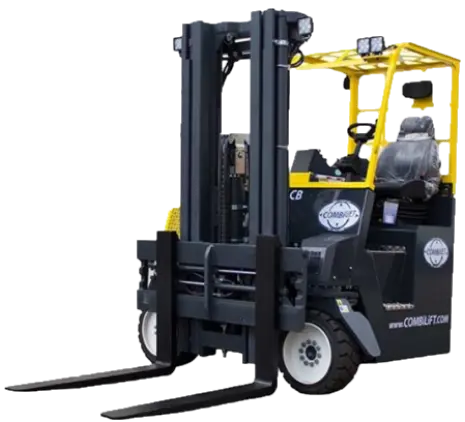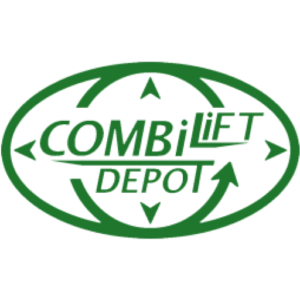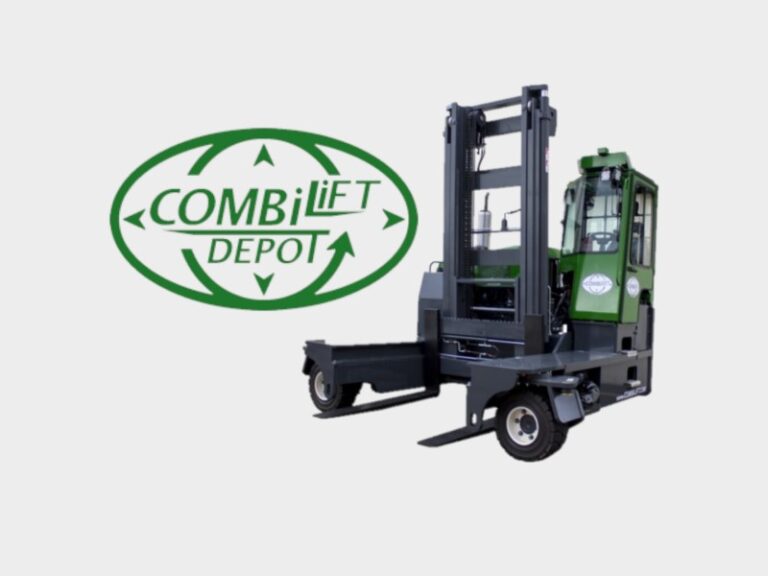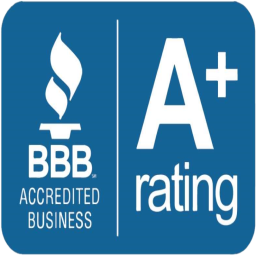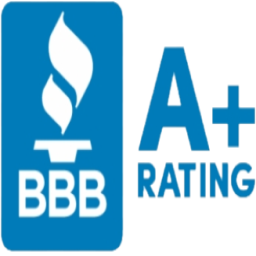Introduction
In the competitive landscape of warehousing and industrial operations, efficiency, safety, and adaptability are vital for success. The Combi-CB forklift, developed by Combilift, is a game-changing solution that addresses these needs through its innovative multi-directional technology and compact design. This forklift is engineered to handle a wide variety of loads, making it a key player in enhancing operational workflows. In this article, we’ll explore the standout features and benefits of the Combi-CB and how it compares to other models in Combilift’s range.
An Overview of the Combi-CB Forklift
The Combi-CB is a versatile, multi-directional counterbalance forklift designed to simplify the transportation of long and bulky items. Unlike traditional forklifts that may struggle with space constraints or extended loads, the Combi-CB seamlessly maneuvers in narrow aisles and tight spaces.
Unique Features of the Combi-CB
- Multi-Directional Movement: The forklift’s hallmark is its multi-directional functionality, which allows operators to move loads forward, backward, and side-to-side. This feature makes navigating narrow spaces and handling long loads a breeze.
- Compact and Robust Design: The Combi-CB’s compact footprint enables it to operate effectively in space-constrained areas while still providing high load capacity.
- Efficient Load Handling: Equipped with a powerful hydraulic system, the Combi-CB can handle significant weight, balancing the demands of efficiency and safety.
- User-Friendly Interface: The intuitive controls and ergonomic cabin design reduce operator fatigue, supporting productivity throughout long shifts.
- Advanced Safety Mechanisms: Integrated sensors and stability features contribute to safe operations, even when transporting cumbersome materials.
The Benefits of the Combi-CB Forklift in Business Operations
1. Maximized Space Utilization
Warehouses and factories often face the challenge of limited space. The Combi-CB’s compact design allows for optimized storage solutions by enabling operators to navigate tight aisles and maximize vertical storage. This feature is especially beneficial in settings where conventional forklifts would struggle to maneuver efficiently.
2. Enhanced Versatility for Diverse Loads
The Combi-CB excels at handling long or awkwardly shaped materials, such as pipes, timber, and metal sheets. This adaptability is key for businesses in the construction, manufacturing, and distribution industries. For higher capacity needs, Combilift’s CB5000 and CB6000 multi-directional forklifts offer robust alternatives that share the same innovative design principles.
3. Reduced Risk and Increased Safety
Safety is a top concern in any material handling operation. The Combi-CB’s stability systems and operator assistance tools, such as load-sensing technology, contribute to safer handling of loads, minimizing risks of tipping or instability. This design consideration aligns with Combilift’s emphasis on enhancing safety across all its models, including the CBE8000 multi-directional forklift, which features similar advanced safety mechanisms.
4. Cost-Effective Operations
The Combi-CB can replace multiple types of forklifts due to its multi-directional capabilities, which can significantly lower operational costs. Fewer forklifts translate to lower maintenance expenses and training time, as operators can master a single, adaptable machine. For even larger load handling, the CB8000 and CB9000 forklifts provide similar cost benefits with enhanced load capacities.
Comparing the Combi-CB with Other Combilift Models
Combi-CB vs. Combi-CBXL
The Combi-CBXL takes the foundational principles of the Combi-CB and scales them up for industries requiring larger and heavier load handling. While the Combi-CB is perfect for medium-duty tasks, the Combi-CBXL expands these capabilities with a larger frame and increased lifting power.
Combi-CB vs. CBE Series
The CBE5000 and CBE6000 multi-directional forklifts add an electric drive system for companies looking to reduce their carbon footprint without sacrificing load capacity or performance. While the CBE series shares the multi-directional technology found in the Combi-CB, it brings additional environmental benefits and energy savings ideal for eco-conscious operations.
Industries Benefiting from the Combi-CB
1. Manufacturing and Fabrication
Manufacturers dealing with irregularly shaped raw materials like steel beams or large sheets find the Combi-CB essential for moving materials safely and efficiently from storage to the production line.
2. Construction
In construction environments where materials such as timber or pipes must be transported across tight spaces, the Combi-CB’s multi-directional capability is unmatched. The forklift’s compact design also allows for use in smaller construction sites where space is at a premium.
3. Distribution and Logistics
Distribution centers can streamline their operations by employing the Combi-CB to move large items without the need for specialized forklifts. The CB8000 and CB9000 models offer higher load capacities for warehouses that need more lifting power but want to maintain flexibility.
Conclusion
The Combi-CB forklift stands as a testament to Combilift’s commitment to innovation in material handling. Its unique blend of compact design, multi-directional movement, and powerful load capabilities makes it an asset in various industrial settings. Whether a company needs a forklift for narrow-aisle navigation or handling oversized loads, the Combi-CB delivers exceptional performance. For operations that require more power or specific environmental considerations, models like the Combi-CBXL and CBE series provide tailored solutions.
Incorporating the Combi-CB into a material handling strategy not only enhances operational efficiency but also supports a safer and more cost-effective workflow. For those seeking robust, adaptable forklifts, exploring Combilift’s range, including the CB5000 and CB6000 and CBE8000, provides a pathway to superior handling solutions.

